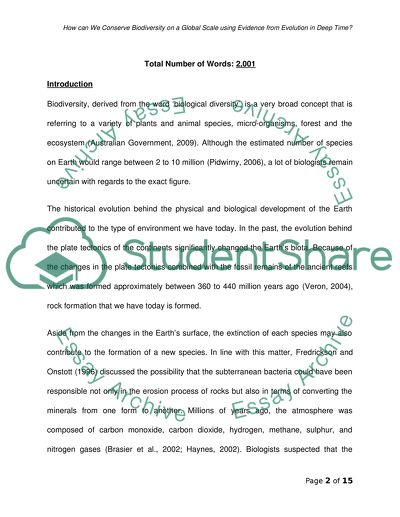Cite this document
(How can We Conserve Biodiversity on a Global Scale using Evidence from Literature review, n.d.)
How can We Conserve Biodiversity on a Global Scale using Evidence from Literature review. Retrieved from https://studentshare.org/biology/1553069-how-can-we-conserve-biodiversity-on-a-global-scale-using-evidence-from-evolution-in-deep-time
How can We Conserve Biodiversity on a Global Scale using Evidence from Literature review. Retrieved from https://studentshare.org/biology/1553069-how-can-we-conserve-biodiversity-on-a-global-scale-using-evidence-from-evolution-in-deep-time
(How Can We Conserve Biodiversity on a Global Scale Using Evidence from Literature Review)
How Can We Conserve Biodiversity on a Global Scale Using Evidence from Literature Review. https://studentshare.org/biology/1553069-how-can-we-conserve-biodiversity-on-a-global-scale-using-evidence-from-evolution-in-deep-time.
How Can We Conserve Biodiversity on a Global Scale Using Evidence from Literature Review. https://studentshare.org/biology/1553069-how-can-we-conserve-biodiversity-on-a-global-scale-using-evidence-from-evolution-in-deep-time.
“How Can We Conserve Biodiversity on a Global Scale Using Evidence from Literature Review”. https://studentshare.org/biology/1553069-how-can-we-conserve-biodiversity-on-a-global-scale-using-evidence-from-evolution-in-deep-time.


